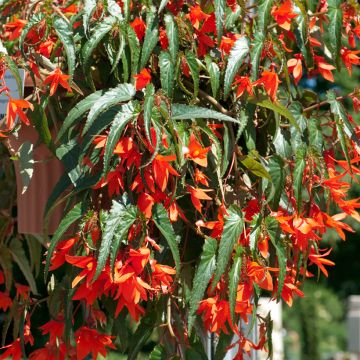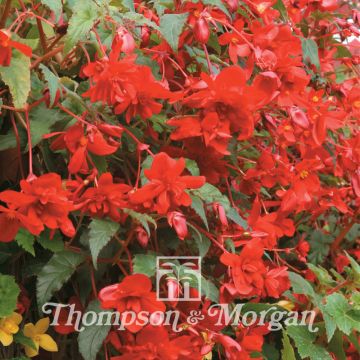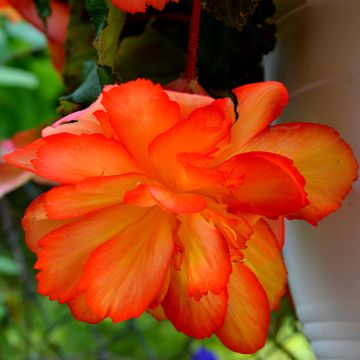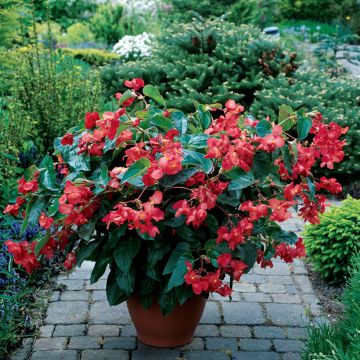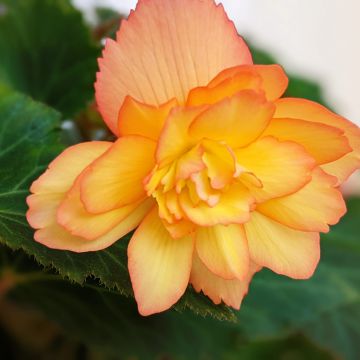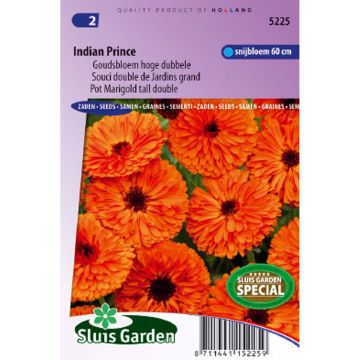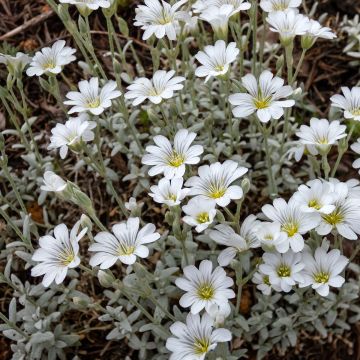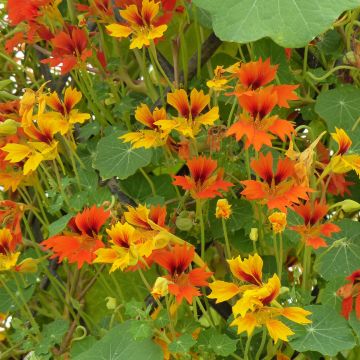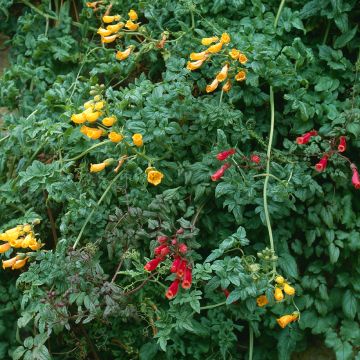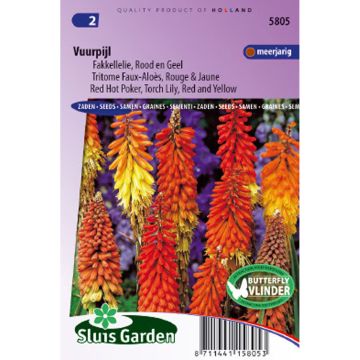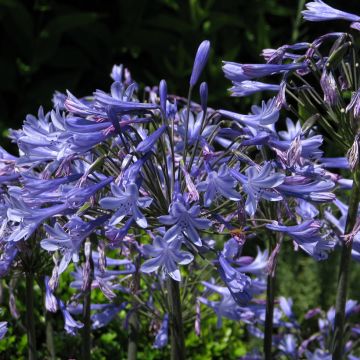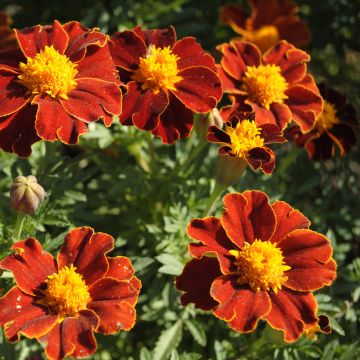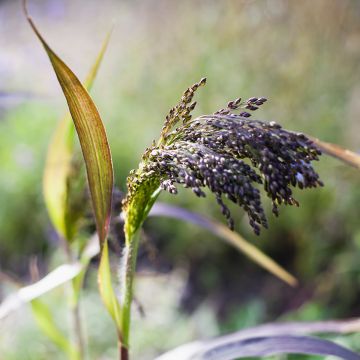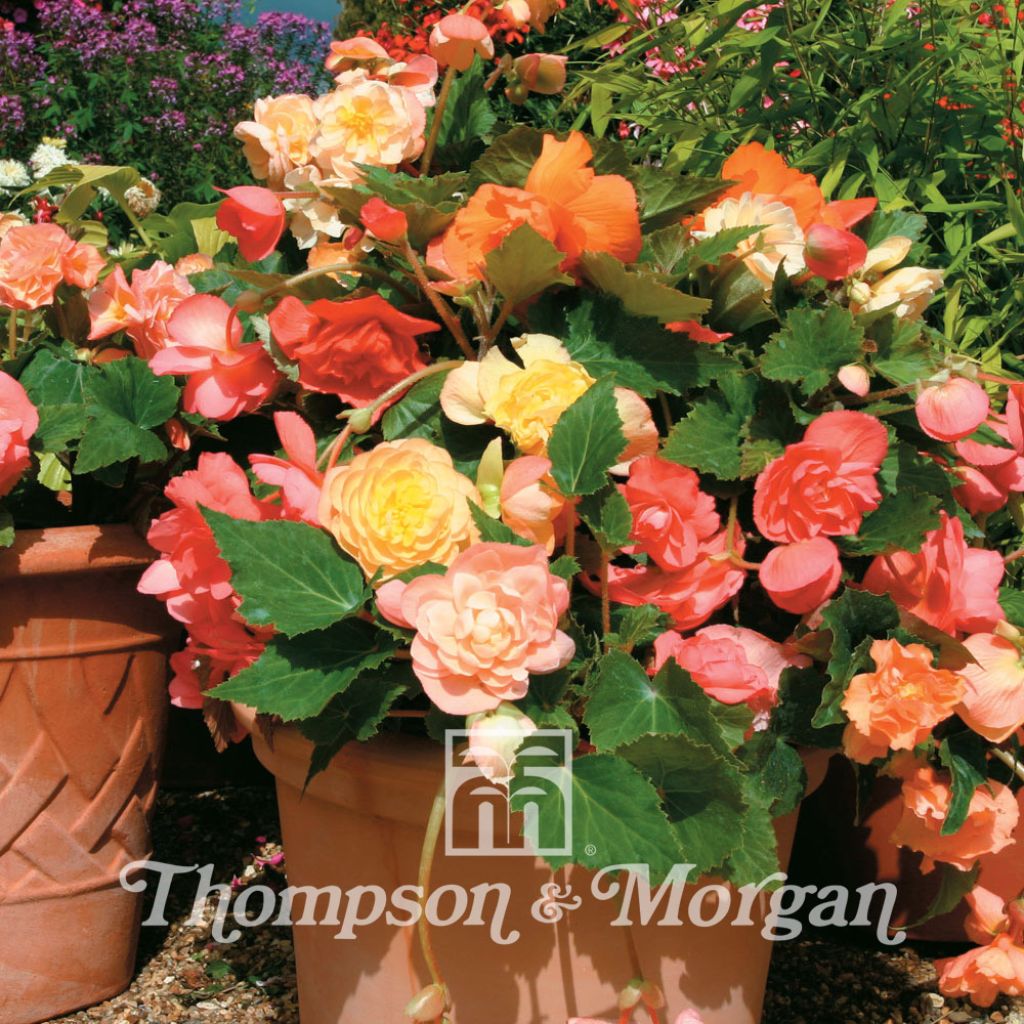

Tuberous Begonia Scentsation Mixed F1 Seeds
Tuberous Begonia Scentsation Mixed F1 Seeds
Begonia x tuberhybrida Scentsation Mixed F1
Hybrid Begonia
Very well. Thank you!!
Vanessa B., 23/11/2018
Why not try an alternative variety in stock?
View all →This plant carries a 6 months recovery warranty
More information
We guarantee the quality of our plants for a full growing cycle, and will replace at our expense any plant that fails to recover under normal climatic and planting conditions.
Seed-only orders are dispatched by sealed envelope. The delivery charge for seed-only orders is €3.90.

Does this plant fit my garden?
Set up your Plantfit profile →
Description
The Scentsation Mixed F1 Begonia, has the Latin name Begonia x tuberhybrida Scentsation Mixed F1. This variety of tuberous hybrid Begonias has been specially selected for the delightful fragrance of its abundant and long summer and autumn flowering. The freshness of its pastel colors combined with the citrus scent and hints of rose fragrance are particularly pleasing to the eyes and nose.
This upright and bushy Begonia reaches a height of 25-30 cm (9.8 - 11.8 in) with a width of 25-30 cm (9.8 - 11.8 in). Its typical Begonia leaves are asymmetrical, toothed, and have a beautiful satin green color. The hairy stems with red highlights contribute to the decorative beauty of its foliage.
From June to October, an abundant multicolored flowering covers a large part of the foliage. The flowers are large solitary rosettes, double or semi-double, with a diameter of 7-9 cm (2.8 - 3.5 in).
Originally, Begonias thrive in a cool and shaded environment, protected from direct sunlight. But this magnificent variety of Begonias can also thrive in full sun or in a shaded area.
Its bushy habit is ideal for bedding, pots on the terrace, and containers on balconies and windowsills, where you can fully enjoy the fragrance of its flowers.
Cultivate the Scentsation Mixed F1 Begonia in pots, containers, or beds, in rich and moist soil. It is a semi-hardy perennial plant that is sensitive to temperatures below 10°C. Therefore, in autumn, you should bring the clumps or pots indoors, let the foliage dry out, and then extract the tubers from the soil, brush them off, and store them in a dry place until the following spring.
Report an error about the product description
Flowering
Foliage
Plant habit
Botanical data
Begonia
x tuberhybrida
Scentsation Mixed F1
Begoniaceae
Hybrid Begonia
Cultivar or hybrid
Other Begonia seeds
Planting and care
Attention: The seed of Begonia is very fine, delicately open the bag on two sides with a pair of scissors.
Sow the Begonia Scentsation Mixed F1 from January to March in a seed tray. Use a good quality soil mixed with 1/3 river sand; a mixture that you will sieve on the surface to bind the seed to its substrate. Before sowing, lightly press the substrate with a board and lightly moisten it, preferably by immersing the base of the seed tray in a water tray so that the water is absorbed by capillary action. Sow your seeds delicately. Do not cover the seeds. Place your seed tray in light, without direct sunlight, at a temperature of 25°C to 27°C.
The germination of the seeds will take from 15 to 60 days. As soon as the plants are manageable, transplant them into 7cm (2.8 in) pots. Keep the soil moist but not excessively during growth; water with a very fine rain or with a small hand sprayer. As soon as the plants are strong enough, transplant them into 15cm (5.9 in) diameter pots or directly into your planters, which you will always keep warm (20-24°C). Finally, 15 days before their final placement, start gradually acclimatizing them to a temperature of 15°C.
In late May or early June, the temperature in the garden will be warm enough to plant your young plants. Choose a shaded or sunny location. In flower beds, add a good shovel of compost to each planting hole. Space your plants at least 20 cm (7.9 in) apart.
Regularly remove faded flowers to maintain their beauty and promote renewal.
In autumn, bring the pots indoors and let the foliage dry before extracting the tubers from the soil, brushing them, and storing them dry until the following spring when they can be replanted in pots.
Sowing period
Intended location
-
, onOrder confirmed
Reply from on Promesse de fleurs
Flower seeds
Haven't found what you were looking for?
Hardiness is the lowest winter temperature a plant can endure without suffering serious damage or even dying. However, hardiness is affected by location (a sheltered area, such as a patio), protection (winter cover) and soil type (hardiness is improved by well-drained soil).

Photo Sharing Terms & Conditions
In order to encourage gardeners to interact and share their experiences, Promesse de fleurs offers various media enabling content to be uploaded onto its Site - in particular via the ‘Photo sharing’ module.
The User agrees to refrain from:
- Posting any content that is illegal, prejudicial, insulting, racist, inciteful to hatred, revisionist, contrary to public decency, that infringes on privacy or on the privacy rights of third parties, in particular the publicity rights of persons and goods, intellectual property rights, or the right to privacy.
- Submitting content on behalf of a third party;
- Impersonate the identity of a third party and/or publish any personal information about a third party;
In general, the User undertakes to refrain from any unethical behaviour.
All Content (in particular text, comments, files, images, photos, videos, creative works, etc.), which may be subject to property or intellectual property rights, image or other private rights, shall remain the property of the User, subject to the limited rights granted by the terms of the licence granted by Promesse de fleurs as stated below. Users are at liberty to publish or not to publish such Content on the Site, notably via the ‘Photo Sharing’ facility, and accept that this Content shall be made public and freely accessible, notably on the Internet.
Users further acknowledge, undertake to have ,and guarantee that they hold all necessary rights and permissions to publish such material on the Site, in particular with regard to the legislation in force pertaining to any privacy, property, intellectual property, image, or contractual rights, or rights of any other nature. By publishing such Content on the Site, Users acknowledge accepting full liability as publishers of the Content within the meaning of the law, and grant Promesse de fleurs, free of charge, an inclusive, worldwide licence for the said Content for the entire duration of its publication, including all reproduction, representation, up/downloading, displaying, performing, transmission, and storage rights.
Users also grant permission for their name to be linked to the Content and accept that this link may not always be made available.
By engaging in posting material, Users consent to their Content becoming automatically accessible on the Internet, in particular on other sites and/or blogs and/or web pages of the Promesse de fleurs site, including in particular social pages and the Promesse de fleurs catalogue.
Users may secure the removal of entrusted content free of charge by issuing a simple request via our contact form.
The flowering period indicated on our website applies to countries and regions located in USDA zone 8 (France, the United Kingdom, Ireland, the Netherlands, etc.)
It will vary according to where you live:
- In zones 9 to 10 (Italy, Spain, Greece, etc.), flowering will occur about 2 to 4 weeks earlier.
- In zones 6 to 7 (Germany, Poland, Slovenia, and lower mountainous regions), flowering will be delayed by 2 to 3 weeks.
- In zone 5 (Central Europe, Scandinavia), blooming will be delayed by 3 to 5 weeks.
In temperate climates, pruning of spring-flowering shrubs (forsythia, spireas, etc.) should be done just after flowering.
Pruning of summer-flowering shrubs (Indian Lilac, Perovskia, etc.) can be done in winter or spring.
In cold regions as well as with frost-sensitive plants, avoid pruning too early when severe frosts may still occur.
The planting period indicated on our website applies to countries and regions located in USDA zone 8 (France, United Kingdom, Ireland, Netherlands).
It will vary according to where you live:
- In Mediterranean zones (Marseille, Madrid, Milan, etc.), autumn and winter are the best planting periods.
- In continental zones (Strasbourg, Munich, Vienna, etc.), delay planting by 2 to 3 weeks in spring and bring it forward by 2 to 4 weeks in autumn.
- In mountainous regions (the Alps, Pyrenees, Carpathians, etc.), it is best to plant in late spring (May-June) or late summer (August-September).
The harvesting period indicated on our website applies to countries and regions in USDA zone 8 (France, England, Ireland, the Netherlands).
In colder areas (Scandinavia, Poland, Austria...) fruit and vegetable harvests are likely to be delayed by 3-4 weeks.
In warmer areas (Italy, Spain, Greece, etc.), harvesting will probably take place earlier, depending on weather conditions.
The sowing periods indicated on our website apply to countries and regions within USDA Zone 8 (France, UK, Ireland, Netherlands).
In colder areas (Scandinavia, Poland, Austria...), delay any outdoor sowing by 3-4 weeks, or sow under glass.
In warmer climes (Italy, Spain, Greece, etc.), bring outdoor sowing forward by a few weeks.




































